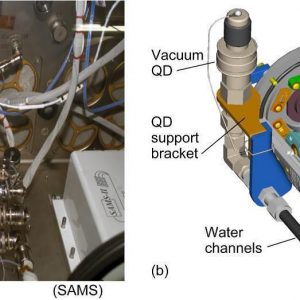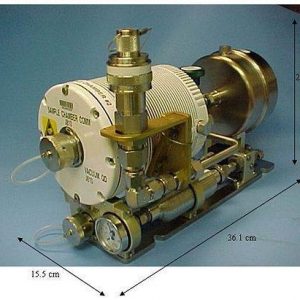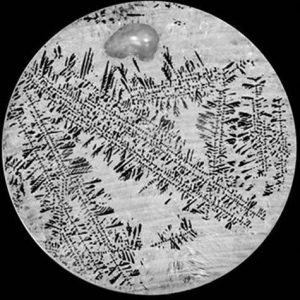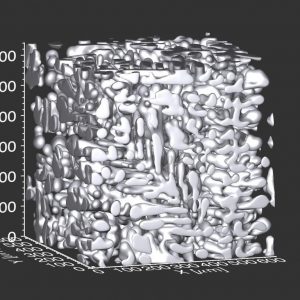Coarsening in Solid Liquid Mixtures-4 (CSLM-4)
In the predecessor CSLM-3 study, samples are a mixture consisting of Sn (tin)-rich particles in lead-tin liquid, a mixture that has a low sintering temperature and a high coarsening rate; making it perfect for studying the process of Oswald ripening. Sample runs are conducted inside the sealed MSG work volume using existing CSLM hardware.
The CSLM-4 investigation further examines metal dendrites (i.e., tree-like structures) that form during the quenching and solidification of molten metals. The spacing between the branches of the dendrite controls the mechanical properties of the solidified metals, such as engine blocks used in car engines. During the casting process the dendrites undergo a process called coarsening. During coarsening the dendrites change their shape, with a change in the spacing between the branches of the dendrites. Since the spacing alters the mechanical properties of the alloy, the coarsening of dendrites has a major effect on the properties of metal alloys. The objective of this experiment is to investigate this coarsening process without the complicating effects of convection of the liquid or sedimentation (e.g., gravity induce effects) of the dendrites.
Samples are processed inside a Sample Processing Unit (SPU), which has a cylindrical sample chamber. Each SPU contains 4 samples and crew members must load each SPU and initiate runs individually. Samples are heated to 185 degrees Celsius to enable dendrite growth. This temperature is maintained for various, predetermined intervals. Each heating time is unique for each SPU. After an SPU is processed, pressurized water is released into the chamber to quench the sample, cooling it down to lock in the structures. During a normal sequence the quench cycle is initiated automatically by the Electronic Control Unit (ECU). Quenching can be initiated manually if needed.
Data captured by the ECU is transferred to the MSG laptop for storage and down loading to the ground-based researchers. The ECU provides power and controls all stages of the sample processing and experimental parameters and status are displayed on the ECU’s LCD display screen. The ECU also controls the temperature inside the SPU sample chamber and monitors and records the sample’s temperature. A baseplate is used to attach the SPU and ECU to the Microgravity Science Glovebox (MSG) work volume floor.
Previous Missions
The initial CSLM-2 investigations were conducted during ISS Increment 7. CSLM-2 high volume fraction samples were conducted during ISS Increment 16/17. CSLM-2R with low volume fraction samples were conducted during Increment 23/24. CSLM-3 dendritic growth samples were conducted during ISS Increment 33/34, and 35/36.
Science Objectives for Everyone
Applications
Space Applications
Earth Applications
Operations
Operational Requirements and Protocols
CSLM-4 is required to operate within the MSG. Crew support during setup, monitoring, processing of samples, data recording and stowing of investigation hardware is necessary. During both SPU pre and post processing, the temperature of each SPU is required to remain below 30 degrees Celsius.
The crew unstows and sets up the CSLM-4 hardware (ECU, first SPU, baseplate, cables, and vacuum hose) in the MSG and runs any necessary vacuum cycles before testing each SPU which contains the lead-tin samples. Sample heating runs are initiated using a toggle switched on the ECU. Once started, the investigation runs autonomously. Individual SPU heat soak times range from 10 min, 15 min, 30 min, 1 hour, 5 hours, and 15 hours, followed by a quench cycle. When an individual sample run is completed, the crew downloads data from the ECU to the MSG laptop and switches samples by removing the SPU and replacing it with a new SPU. Once all runs have been completed, the hardware is removed from the MSG work volume and stowed. The processed SPU’s are stored on ISS until they can be returned to Earth. On Earth, the researchers analyze each sample for particle size distribution, particle morphology, matrix structure, and particle crystallographic orientation.
Related Documents
Data is currently unavailable.
Publications
Data is either unavailable, restricted, or under review.
Gallery
Contact Information
PI: Professor Peter W. Voorhees, Northwestern University
PS: Dr. Walter Duval, NASA GRC
PM: Robert Hawersaat, NASA GRC
Engineering Team: ZIN Technologies, Inc.




